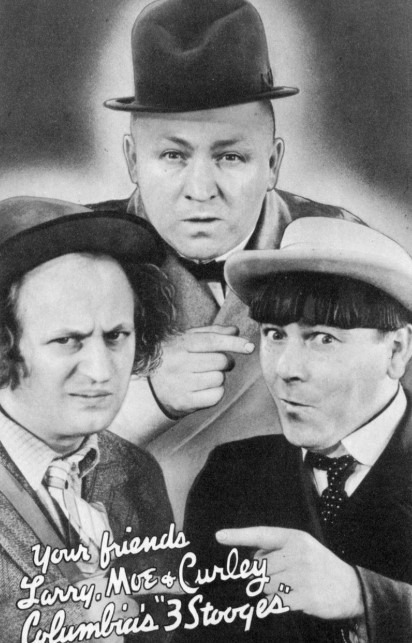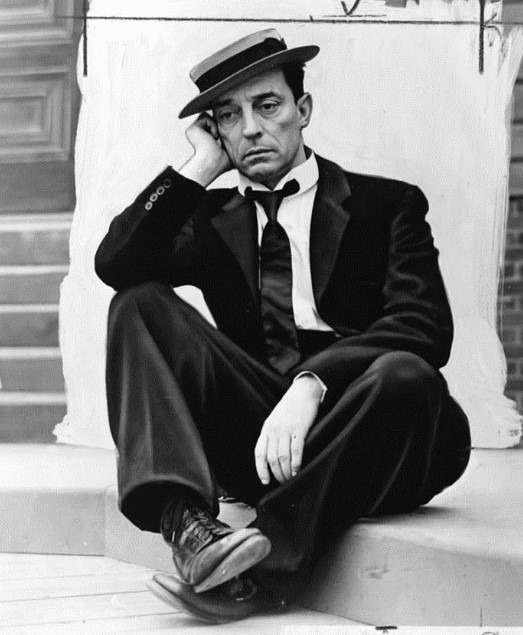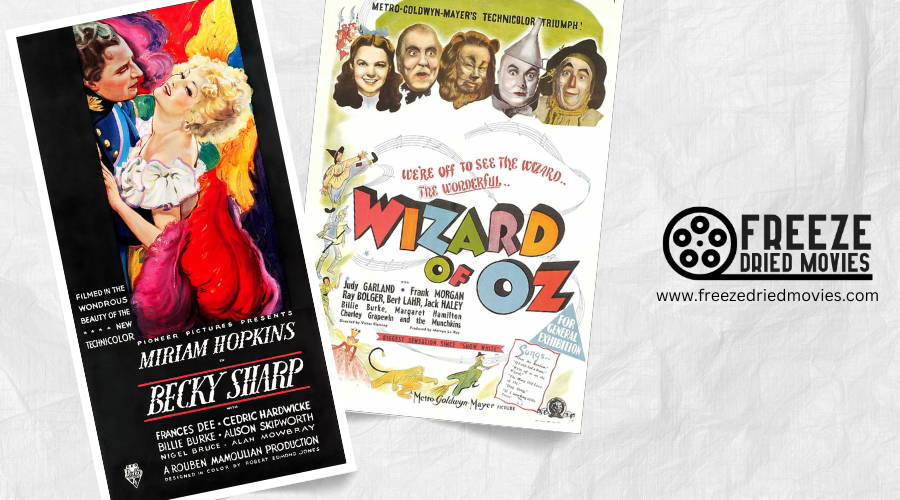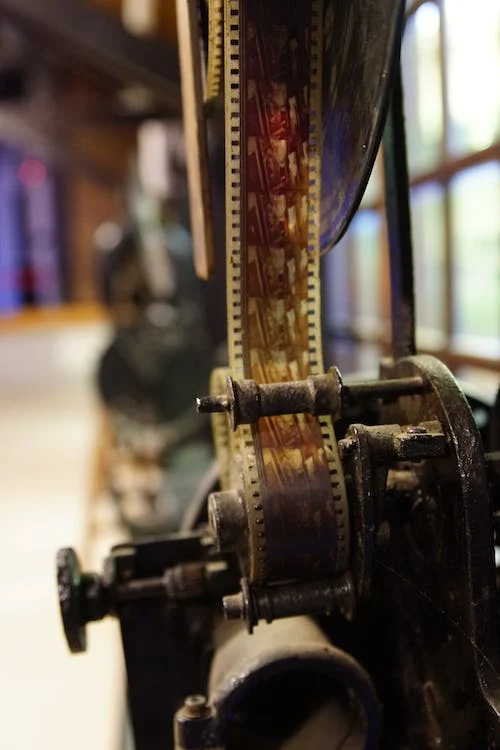Who Were the Famous Comedians of the 1930s?

The 1930s comedy landscape featured legendary performers like the Marx Brothers (Groucho, Harpo, Chico), Charlie Chaplin, W.C. Fields, Laurel and Hardy, and The Three Stooges. You'll recognize the Marx Brothers' anarchic wit, Chaplin's physical brilliance, Fields' curmudgeonly persona, Laurel and Hardy's perfect partnership, and the Stooges' slapstick mastery. These pioneers shaped modern humor while helping audiences escape Depression-era hardships. Their revolutionary techniques and timeless appeal continue to influence entertainment today.
Key Takeaways
- The Marx Brothers revolutionized 1930s comedy with their anarchic style, wordplay, and physical humor in films like "Duck Soup."
- Charlie Chaplin masterfully navigated the transition to "talkies" with silent masterpieces "City Lights" and "Modern Times."
- W.C. Fields captivated Depression-era audiences with his distinctive voice, misanthropic persona, and sharp one-liners.
- Laurel and Hardy created timeless comedy with their contrasting personalities and expertly choreographed physical humor.
- The Three Stooges pioneered slapstick comedy with their signature eye-pokes and physical antics across nearly 200 short films.
The Marx Brothers: Masters of Verbal and Physical Comedy
Among the many comedic geniuses of the 1930s, the Marx Brothers stand out as true pioneers of verbal and physical comedy. The Marx Brothers redefined comedy with their unmatched blend of verbal wit and physical brilliance. This trio - Groucho, Harpo, and Chico - revolutionized entertainment with their anarchic style that blended razor-sharp wit, slapstick, and musical talent.
You'll recognize Groucho by his painted mustache, bushy eyebrows, and rapid-fire wordplay. Harpo, the silent member, communicated through facial expressions, physical antics, and masterful harp performances. Chico contributed his Italian-American accent and business acumen that propelled them to stardom.
What made the Marx Brothers truly exceptional was their willingness to challenge authority and social conventions through comedy. Films like "Duck Soup" and "A Night at the Opera" showcase their subversive humor that continues to influence comedians today.
Their groundbreaking film Duck Soup (1933) is widely considered one of the greatest comedies ever made, showcasing their unique blend of anarchic humor and biting political commentary.

Charlie Chaplin's Transition to "Talkies"
While the Marx Brothers thrived in the new era of sound, Charlie Chaplin faced a unique challenge as Hollywood shifted to "talkies" in the 1930s. The iconic filmmaker, whose career began far from New York City's theater scene, remarkably maintained his popularity despite his reluctance to embrace sound.
Chaplin's trademarks—his physical comedy and social commentary—didn't easily translate to sound films. Yet this didn't stop him from creating masterpieces like "City Lights" (1931) and "Modern Times" (1936), which showcased his silent film expertise while addressing pressing social issues.
Though critics questioned his resistance to sound, Chaplin eventually evolved, moving toward more dramatic and socially conscious roles. This culminated in "The Great Dictator" (1940), proving his versatility and cementing his legacy as cinema's innovative pioneer. Chaplin initially resisted sound films because he feared spoken dialogue would undermine the universal appeal of his beloved Tramp character and detract from the expressive pantomime that made silent cinema so powerful.

W.C. Fields: The Curmudgeonly Comic Genius
Unlike Chaplin's careful resistance to talkies, W.C. Fields embraced the sound era with his distinctive gravelly voice becoming central to his appeal. You'd recognize his cantankerous persona immediately in motion pictures like "The Bank Dick" and "My Little Chickadee," where his misanthropic character and sharp one-liners blended slapstick with biting social satire.
Every comedy producer recognized Fields' unique talent for challenging societal norms and sentimentality. His openly expressed disdain for children and perpetually disgruntled demeanor paradoxically made him beloved by Depression-era audiences.
Fields established himself as a pioneering figure in American comedy by developing a subversive, irreverent style that influenced generations of comedians. Despite his curmudgeonly character, audiences couldn't help but be captivated by his brilliant comedic timing and memorable quips. His mastery of vocal performance showcased how sound in cinema transformed entertainment in the 1930s, similar to how it revolutionized the horror genre.

Laurel and Hardy: The Perfect Comedy Duo
Stan Laurel and Oliver Hardy created comedy magic whenever they appeared together on screen, forming what many consider the quintessential comedy partnership of the 1930s. Their contrasting personas—Laurel's innocent bumbling against Hardy's pompous irritability—generated comedic tension that delighted audiences across more than 100 films.
Their enduring popularity isn't surprising—they pioneered techniques that later comedians from Abbott and Costello to modern performers would adopt and adapt, cementing Laurel and Hardy's legacy as true comedy legends.
You'll find their influence everywhere in comedy history. Their masterful physical comedy transformed ordinary situations into hilarious disasters, with perfect timing and facial expressions that spoke volumes without words. Films like "Way Out West" and "Block-Heads" showcase their exceptional talent for slapstick routines and visual gags.
The duo's charming friendship and bumbling antics helped audiences escape the harsh realities of the Great Depression, offering much-needed laughter during difficult economic times.

The Three Stooges: Pioneers of Slapstick
The Three Stooges elevated physical comedy to an art form during the 1930s, creating an unmistakable brand of humor that still resonates with audiences today. While they never won an Academy Award, their influence on comedy far exceeded formal recognition.
You'll instantly recognize Moe Howard by his bowl cut and authoritarian leadership, often directing the trio's chaotic antics. Curly, the breakout star, brought unmatched energy with his signature sounds and physical prowess. Alongside Larry Fine, they appeared in over 190 short films.
Unlike the Little Rascals who appealed primarily to children, the Stooges attracted audiences of all ages with their trademark eye-pokes and head-bonks. Despite cast changes over time, their slapstick legacy endured, cementing them as comedy legends.
Mae West: Breaking Boundaries With Innuendo
While the Three Stooges dominated physical comedy in the 1930s, Mae West revolutionized American humor through her masterful use of innuendo and suggestive wit. As the most popular member of Hollywood's boundary-pushing entertainers, West captivated audiences with her unapologetically provocative persona.
She became popular for crafting a unique comedic style that blended sharp dialogue with seductive physical presence. Her breakthrough films "She Done Him Wrong" and "I'm No Angel" challenged social norms while delighting viewers with clever double entendres.
Despite facing significant censorship and moral outrage, West remained defiantly successful throughout the decade. Her pioneering work did more than entertain—it paved the way for more empowered portrayals of female sexuality in cinema. West's legacy proves that intelligence and wit were her most powerful attributes.

Buster Keaton's Later Career Highlights
Many consider Buster Keaton's 1930s work unfairly overlooked compared to his silent film masterpieces. Though best known for his stunts and visual comedy years ago in silents, Keaton continued showcasing his remarkable physical comedy at MGM, Paramount, and Columbia throughout the 1930s.
During this decade, he appeared in over 40 productions, including memorable films like "The Passionate Plumber" (1932) and "Yodelins' Yokel" (1933). While working under major studios restricted the creative freedom he once enjoyed, his comedic talent remained evident.
Unfortunately, MGM released him in 1937, triggering a difficult period of alcoholism and personal struggles. Despite these challenges, Keaton's 1930s filmography demonstrates his enduring influence and adaptability as one of cinema's greatest comedians before his eventual comeback in the 1940s.
How 1930s Comedy Shaped Modern Humor
When you examine today's comedy landscape, you'll find the unmistakable fingerprints of 1930s comedic pioneers everywhere. This transformative decade gave birth to comedic styles that would become foundational to modern humor.
The Marx Brothers' anarchic irreverence and Groucho's quick-witted one-liners created a template for subversive comedy that continues today.
W.C. Fields' misanthropic persona developed character-based comedy that influenced generations of performers who built careers on distinct personalities. Charlie Chaplin elevated physical comedy while incorporating social commentary, demonstrating how humor could address serious issues. Mae West's provocative style challenged censorship norms, paving the way for more daring comedic expressions.
These innovators didn't just entertain—they fundamentally changed how comedy functions in society, establishing patterns that remain crucial in contemporary entertainment.




